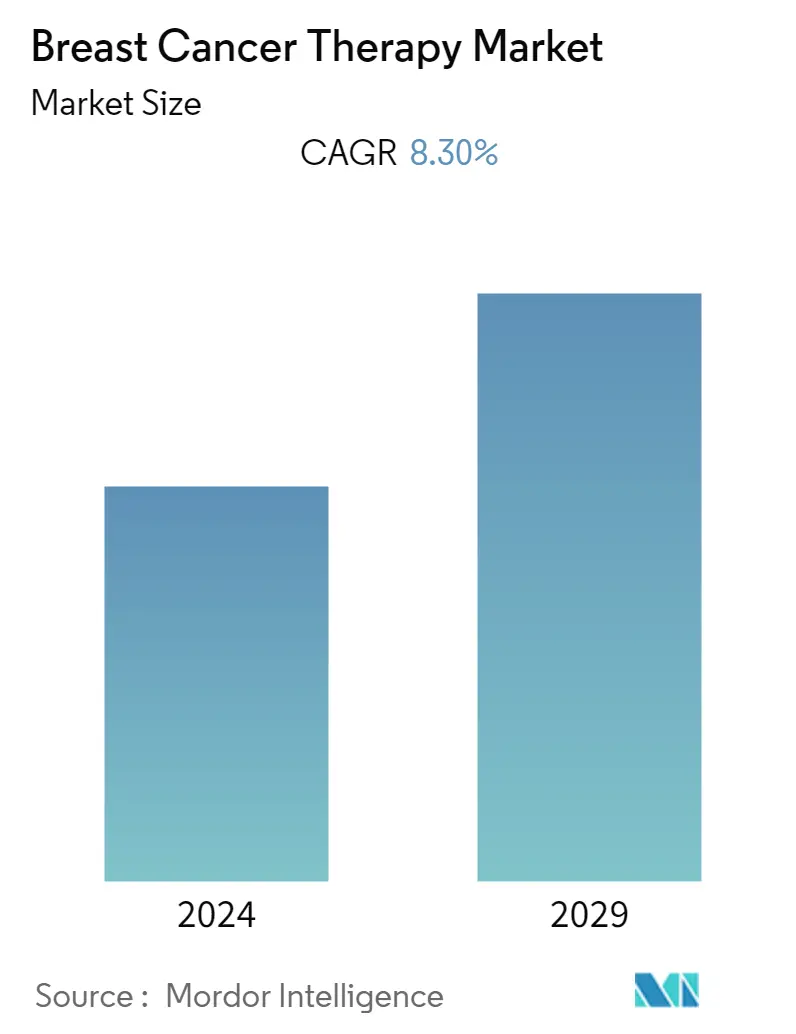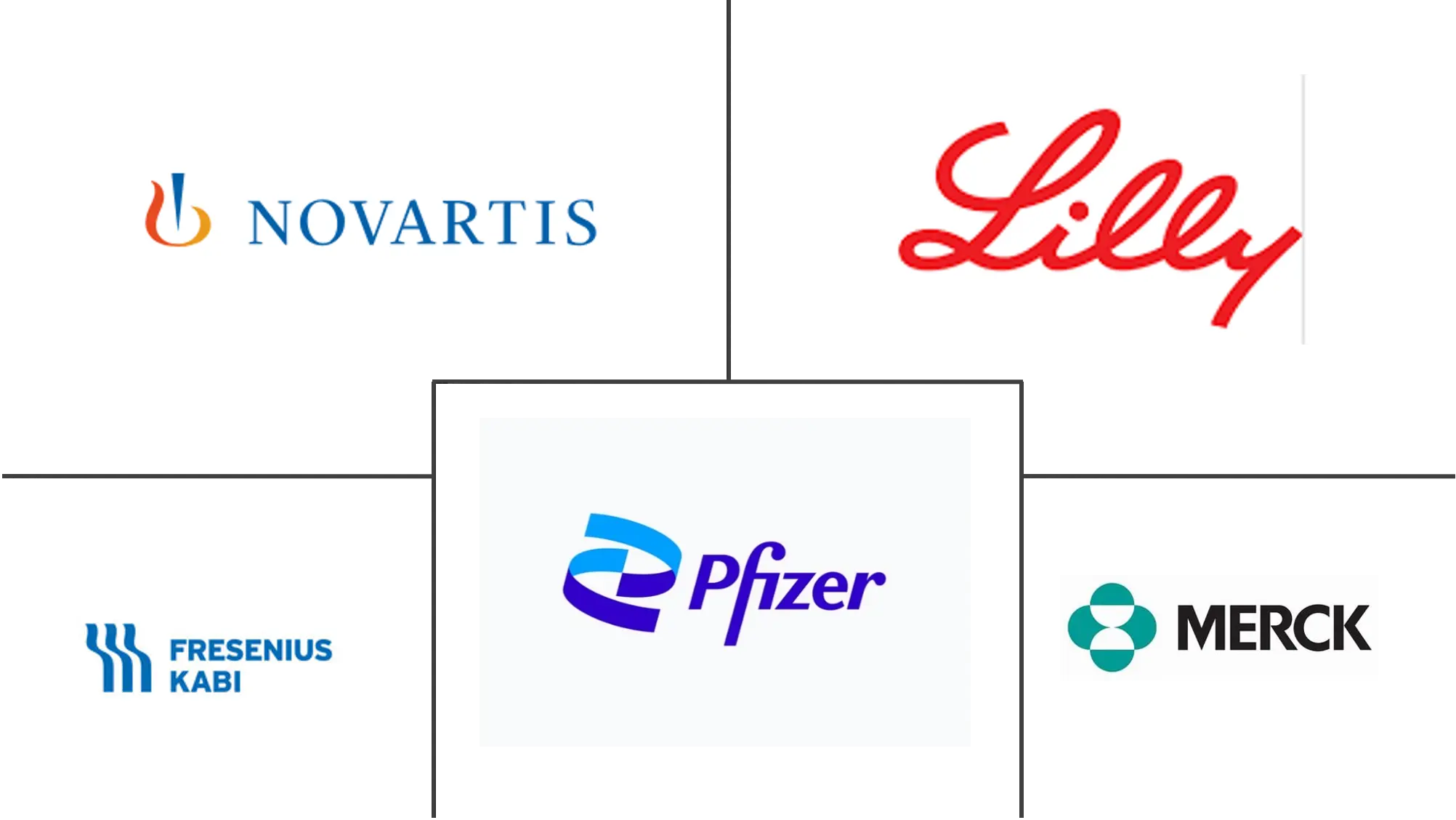Market Size of Breast Cancer Therapy Industry

| Study Period | 2024 - 2029 |
| Base Year For Estimation | 2023 |
| Forecast Data Period | 2024 - 2029 |
| CAGR | 8.30 % |
| Fastest Growing Market | Asia-Pacific |
| Largest Market | North America |
Major Players
*Disclaimer: Major Players sorted in no particular order |
Need a report that reflects how COVID-19 has impacted this market and its growth?
Breast Cancer Therapy Market Analysis
The breast cancer therapy market is expected to record a CAGR of 8.3% over the forecast period.
Following the outbreak of COVID-19, the market faced a slight setback owing to delays in diagnoses, shortages of drugs, and unavailability of healthcare professionals. As per a research study published in October 2021 by the Journal of Medical Screening, during the COVID-19 pandemic, breast cancer screening and participation were affected globally, and as per the same source, in response to COVID-19, many countries halted their breast screening programs. For instance, national screening programs were suspended in Canada, the Netherlands, Germany, Italy, the UK, and Australia, for 1-6 months in 2020. Thus, the COVID-19 pandemic impacted the market studied. Although, with the ongoing vaccinations and stabilizing cases of COVID-19, the market studied is expected to regain its full potential over the forecast period.
The major factors fueling the market's growth are the high incidence and prevalence rates of breast cancer, increasing investment in research and development, and advancements in cancer biology and pharmacology, promoting drug development.
According to Globocan, in 2020, about 2,261,419 new cancer cases were reported worldwide, contributing to about 11.7% of the total cancer cases. As per canceraustralia.gov.au, in 2021, 20,030 new breast cancer cases were diagnosed in the country (164 males and 19,866 females). The same source reports that in 2021, a person had an estimated 1 in 15 (or 6.7%) risk of being diagnosed with breast cancer by the age of 85 (1 in 8 or 13% for females and 1 in 829 or 0.12% for males). Therefore, the high burden of breast cancer is increasing the demand for breast cancer treatment, thereby contributing to the market's growth.
The increasing focus of research studies by the market players. For instance, in September 2021, Novartis AS collaborated with Solti on HARMONIA, an international, randomized, Phase III, multicenter, and open-label study of Kisqali (ribociclib) versus Ibrance (palbociclib), both in combination with endocrine therapy. This study was on patients with hormone receptor-positive, human epidermal growth factor receptor 2-negative (HR+/HER2-) advanced or metastatic breast cancer with a HER2-enriched (HER2E) intrinsic subtype.
Increasing launches by manufacturers to meet the growing demand for innovative products are expected to drive market growth. For instance, in July 2021, Arvinas Inc. and Pfizer Inc. collaborated to develop and commercialize ARV-471, an investigational oral PROTAC (PROteolysis TArgeting Chimera) estrogen receptor protein degrader. Such factors potentially drive the demand for the adoption of breast cancer therapy worldwide.
On the other hand, the risk of adverse effects of radiation exposure and stringent regulatory scenarios are hindering the market's growth.
